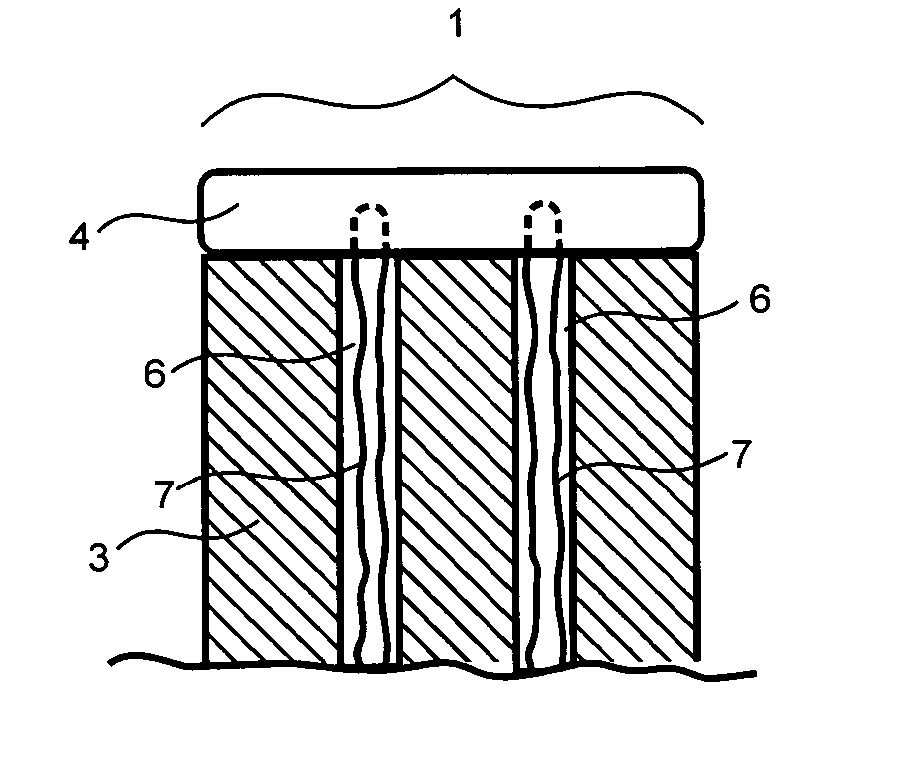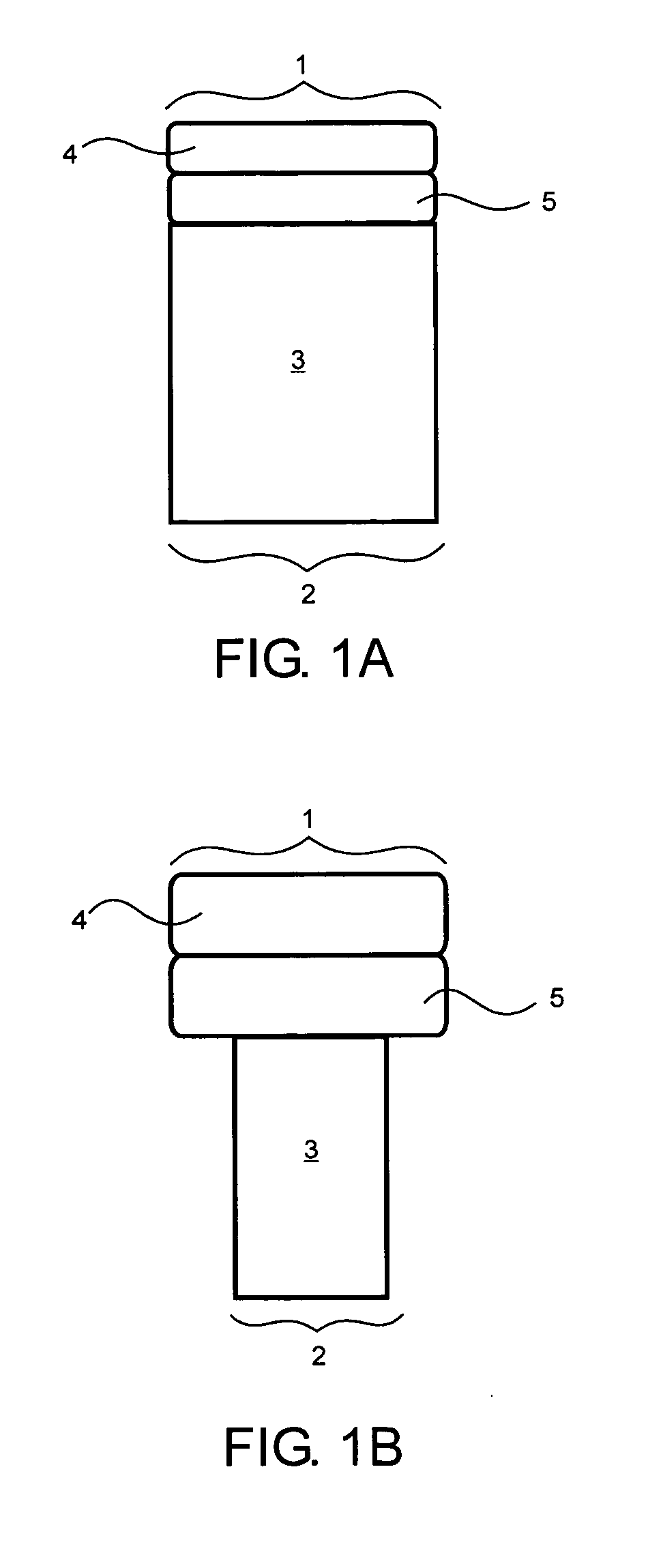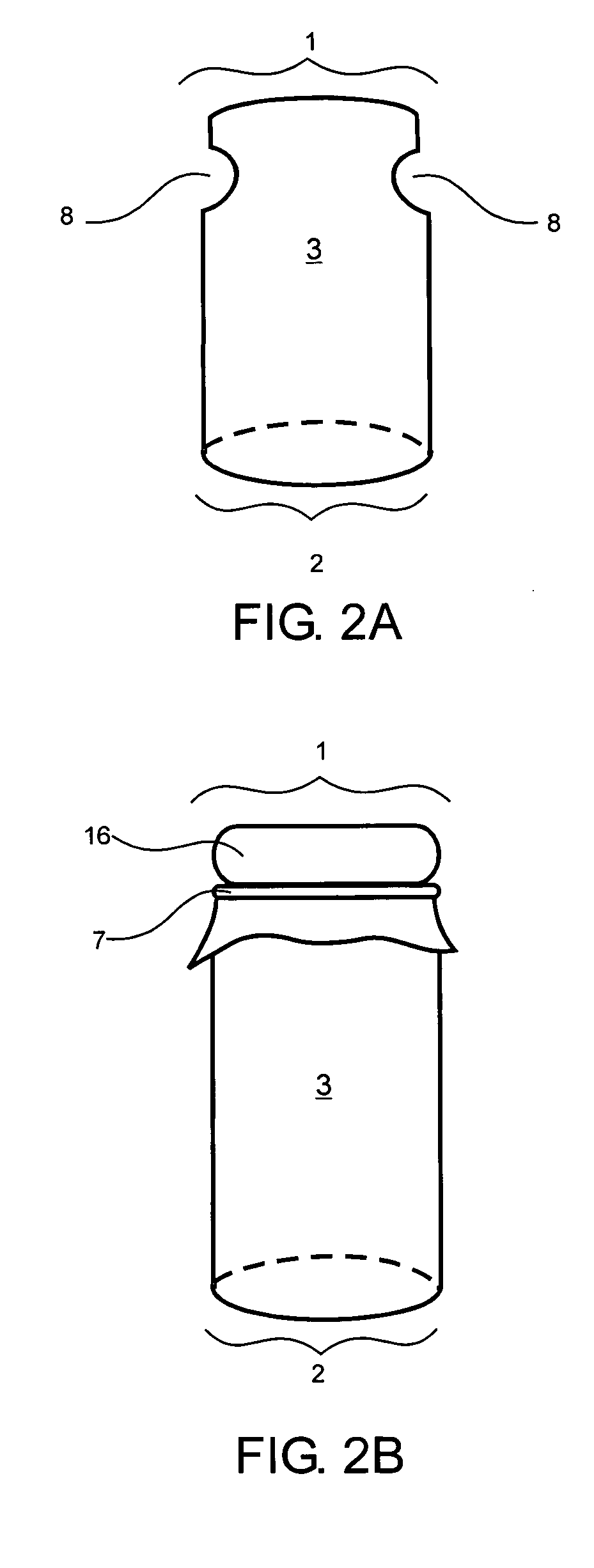Implant scaffold combined with autologous or allogenic tissue
a technology of allogenic tissue and implanted scaffold, which is applied in the field of implanted scaffold combined with autologous or allogenic tissue, can solve the problems of delivery of such allogenic or autologous tissue to patients, difficult stabilization and fixation into joints, and difficulty in maintaining position, so as to increase the ingrowth of patient's tissue, reduce or prevent an immune response, and increase the repair of damaged tissue
- Summary
- Abstract
- Description
- Claims
- Application Information
AI Technical Summary
Benefits of technology
Problems solved by technology
Method used
Image
Examples
Embodiment Construction
[0033] Preferably, the implants of the present invention are approximately cylindrical in shape but may also be rectangular, particularly long rectangular strips, circular, elongated, or irregularly shaped according to the shape of the defect. Implants can be hand-shapeable implants which are moldable into a wide variety of shapes, as described in U.S. Pat. No. 5,716,413. The scaffold may also have a contoured surface, such as concave or convex, to match the contours of the defect. When the implant is cylindrical, the implant has a diameter of between about 1 mm and 50 mm, preferably between about 3 mm and 30 mm, and more preferably between about 10 mm and 25 mm. The height of the implant is between about 2 mm and about 20 mm, preferably between about 3 mm and about 15 mm, more preferably between about 6 mm and about 12 mm. The diameter or width of the tissue layer or layers may be greater than, less than, or the same as the diameter or width of the scaffold body depending on the sh...
PUM
 Login to View More
Login to View More Abstract
Description
Claims
Application Information
 Login to View More
Login to View More - R&D
- Intellectual Property
- Life Sciences
- Materials
- Tech Scout
- Unparalleled Data Quality
- Higher Quality Content
- 60% Fewer Hallucinations
Browse by: Latest US Patents, China's latest patents, Technical Efficacy Thesaurus, Application Domain, Technology Topic, Popular Technical Reports.
© 2025 PatSnap. All rights reserved.Legal|Privacy policy|Modern Slavery Act Transparency Statement|Sitemap|About US| Contact US: help@patsnap.com



